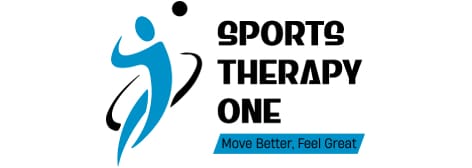Understanding Tennis Elbow
Tennis elbow, medically known as lateral epicondylitis, is a common condition that can affect anyone, not just tennis players. This condition occurs when the extensor carpi radialis brevis tendons in your elbow are overloaded, due to repetitive motions of the wrist and arm. The question that often arises is: how long does it take for tennis elbow to heal? And importantly, how can you get rid of tennis elbow?
Tennis elbow is a type of tendinitis that causes pain in the outer part of the elbow and forearm. This discomfort stems from inflammation or small tears in the tendons that connect your forearm muscles to your elbow’s. Repetitive gripping activities, especially if they involve thumb and first two fingers, may lead to tennis elbow. Despite its name, athletes aren’t the only people who develop tennis elbow. Jobs that can lead to developing tennis elbow include painters, plumbers, carpenters, butchers, and cooks.
Duration for Healing Tennis Elbow
The healing time for tennis elbow varies significantly. Several factors play a part such as the severity of the injury, your overall health status, age and rehab adherence. Generally speaking, most people recover from tennis elbow within 6 months to 2 years.
Mild cases may heal within three weeks with adequate rest and an optimal. tissue loading. However, more severe or chronic cases may require longer periods of treatment before complete recovery is achieved. Remember that each person’s healing process is different. Some may recover faster than others even with similar injury severities. It’s important not to focus on ‘how long tennis elbow takes to heal, but on ‘how can I help my own healing?’
How to Get Rid of Tennis Elbow
Getting rid of tennis elbow involves a combination of rest, Sports Therapy, optimal loading, and sometimes medical interventions. Here are some strategies that can help speed up your recovery:
1. Rest and Protect Your Arm: The first step in treating tennis elbow is to give your arm adequate rest. Avoid activities that strain your affected arm or exacerbate the pain.
2. Sports Therapy: A sports physical therapist can teach you exercises to gradually stretch and strengthen your muscles. Especially the ones in your forearm. They can also perform manual therapy like Sports Massage, or Muscle Energy Techniques (MET’s). This can help reduce pain and improve movement.
3. Use of a Brace: Wearing a counterforce brace around the forearm can help with support and ease pain. It’s important not to wear a brace for too long though. As with any support, muscles switch off when they have little to do. Therefore relying on a brace for too long can be counterproductive.
4. Medications: Over-the-counter pain relievers like ibuprofen or aspirin may be recommended by your doctor to reduce pain and inflammation.
5. Steroid Injections: If conservative treatments don’t work, a doctor might suggest injecting steroids into the painful area. This treatment isn’t always the first go to, neither is it always successful and is usually reserved for severe cases.
6. Surgery: In rare cases where non-surgical treatments aren’t effective after six to 12 months, surgical intervention may be considered.
Preventing Tennis Elbow
Prevention is always better than cure. To prevent tennis elbow:
1. Strengthen Your Forearm Muscles: Regularly performing strengthening exercises for your forearm muscles can help them better withstand stress and repetitive activities.
2. Stretch Before Activities: Always take time to warm up before any physical activity, especially those involving your arms.
3. Use Proper Equipment and Technique: Whether it’s using ergonomic tools at work or proper racket grip size in tennis, correct equipment and technique can significantly reduce strain on your tendons.
4. Don’t Ignore Pain: If you start to feel pain in your elbow during an activity, stop and rest.
Conclusion
The healing time for tennis elbow can vary from person to person. Understanding the condition and following appropriate treatment strategies can help you get rid of tennis elbow effectively. If you are struggling with tennis elbow right now, feel free to book in with us at Sports Therapy One. Here you will receive a full injury assessment and treatment plan. Why struggle when you don’t have to?

